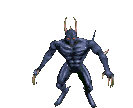FLYBOYJ
"THE GREAT GAZOO"
wmaxt said:Thanks Guys,
I think the P-38 was especialy good at such maneuvers. It was exceptional at high speed short term dives and climbs. The F model was, as reported by the AAF in '43 equal or better than any AAF single engine fighter in turns (the L was much better) and these tactics just enhance those abilities.
wmaxt
















